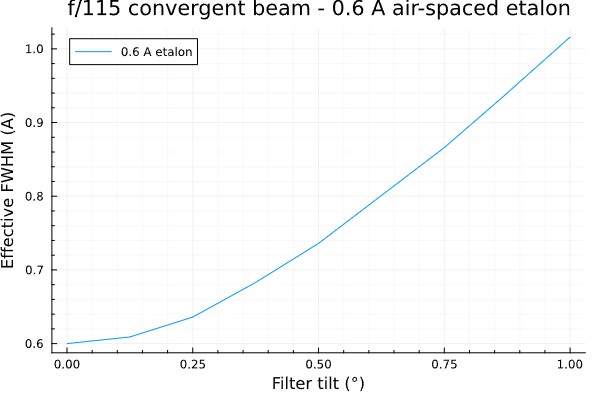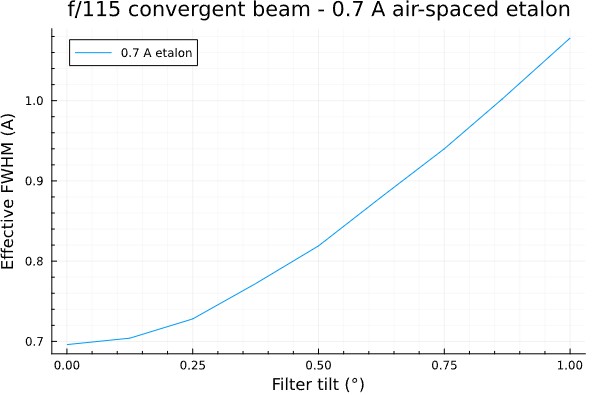When the etalon is tilted in a telecentric beam, the transmission profile becomes asymmetrical:. The transmission on Ha decreases, the CWL shifts while the effective FWHM increases:
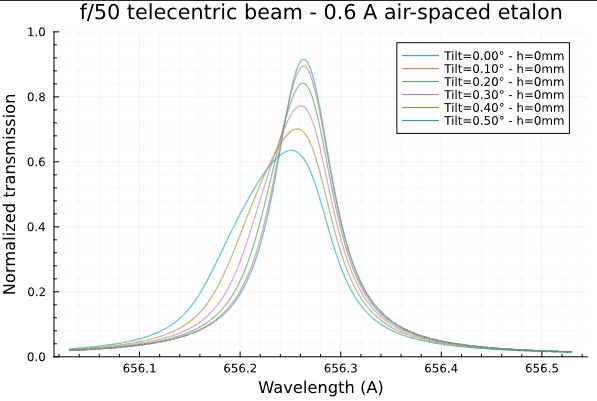
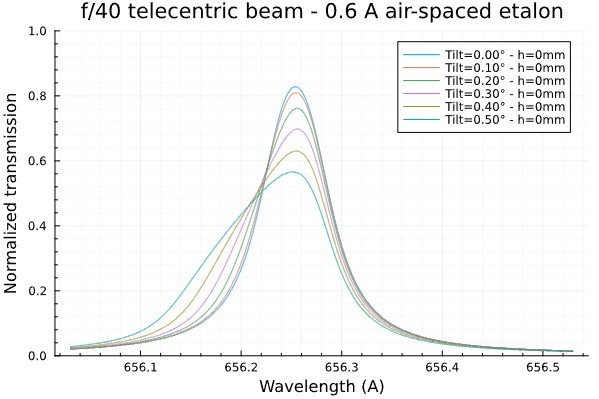
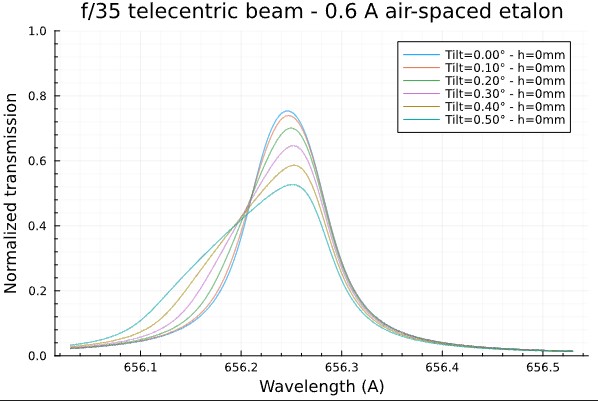
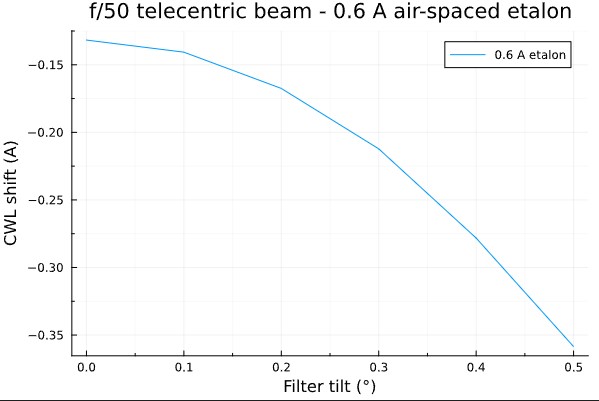

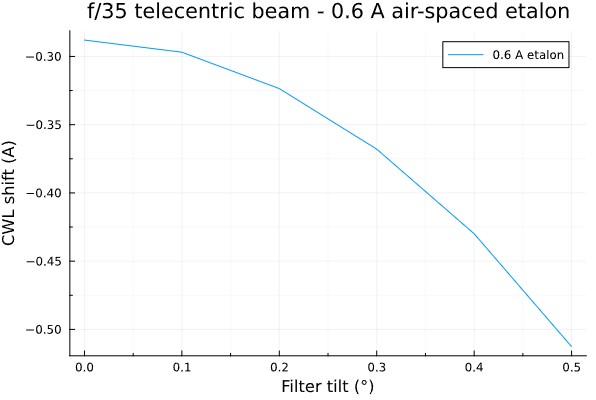
Tilted air-spaced Fabry-Perot etalon in front position or in a telecentric beam
Daystar filter modelling and additional results
Air-spaced F-P etalon theoritical performances and comparison with mica-spaced etalons
Tilted air-spaced etalons in telecentric beam or in a f/115 convergent beam
Analysis of the PST modification (air-spaced F-P etalon) and comparison between collimated and telecentric mounts
Contrast factor of the F-P etalon and blocking filter assembly
Contrast factor of the F-P etalon : test of various stacking schemes
Fabry-Perot math and bibliography
In this page, we study two cases :
1- tilted air-spaced etalon placed in a telecentric beam (such as in the Quark + Lunt 40 mod),2- a very specific case where a tilted air-spaced etalon is exposed directly to the Sun and placed in front of the slit of a spectrograph.






